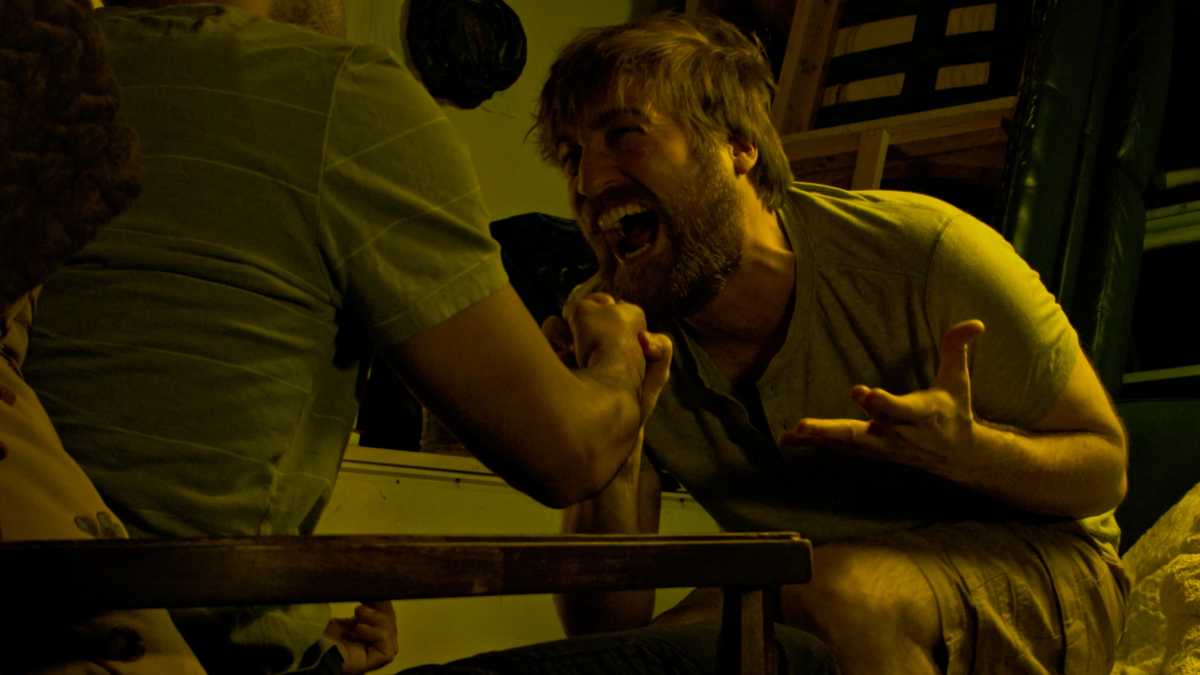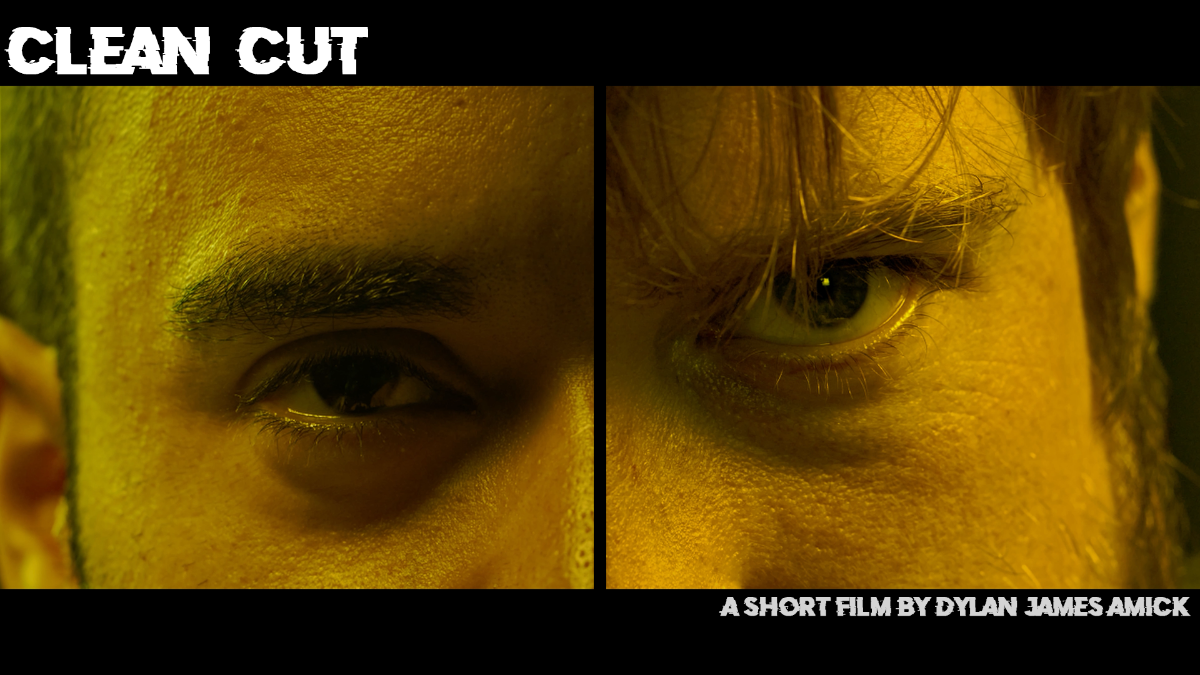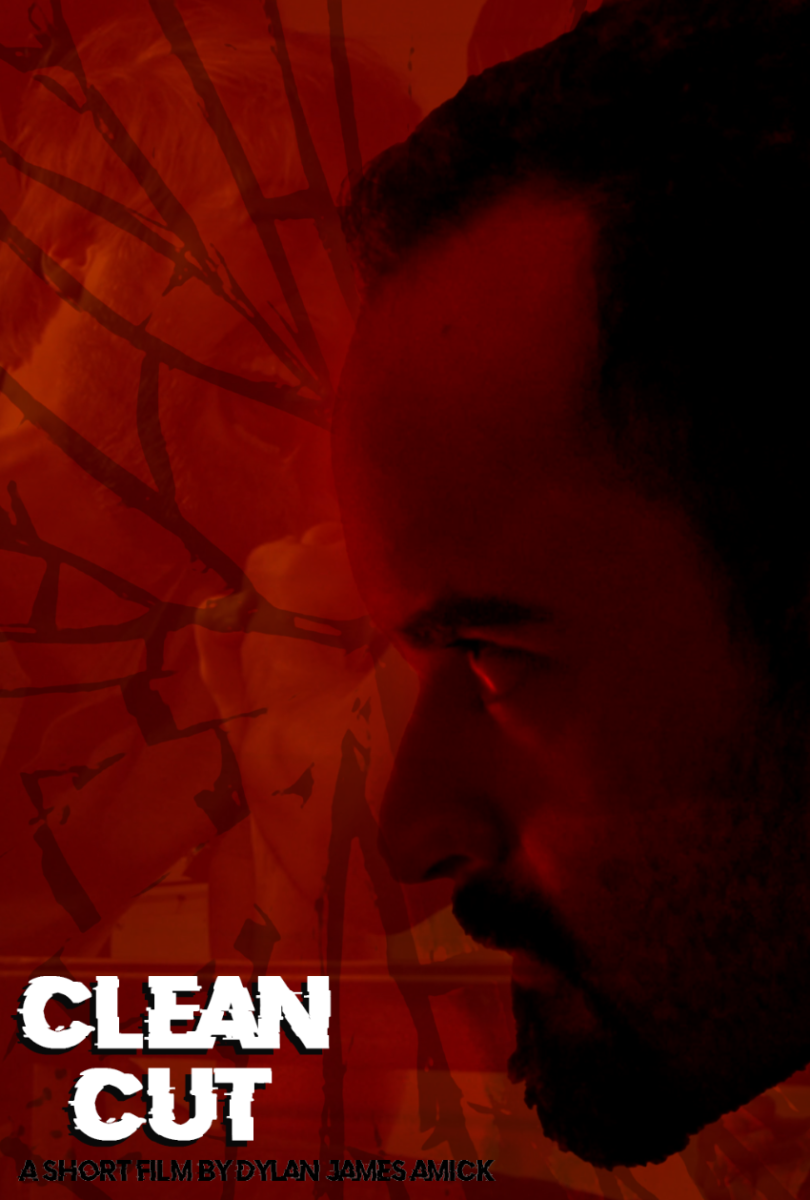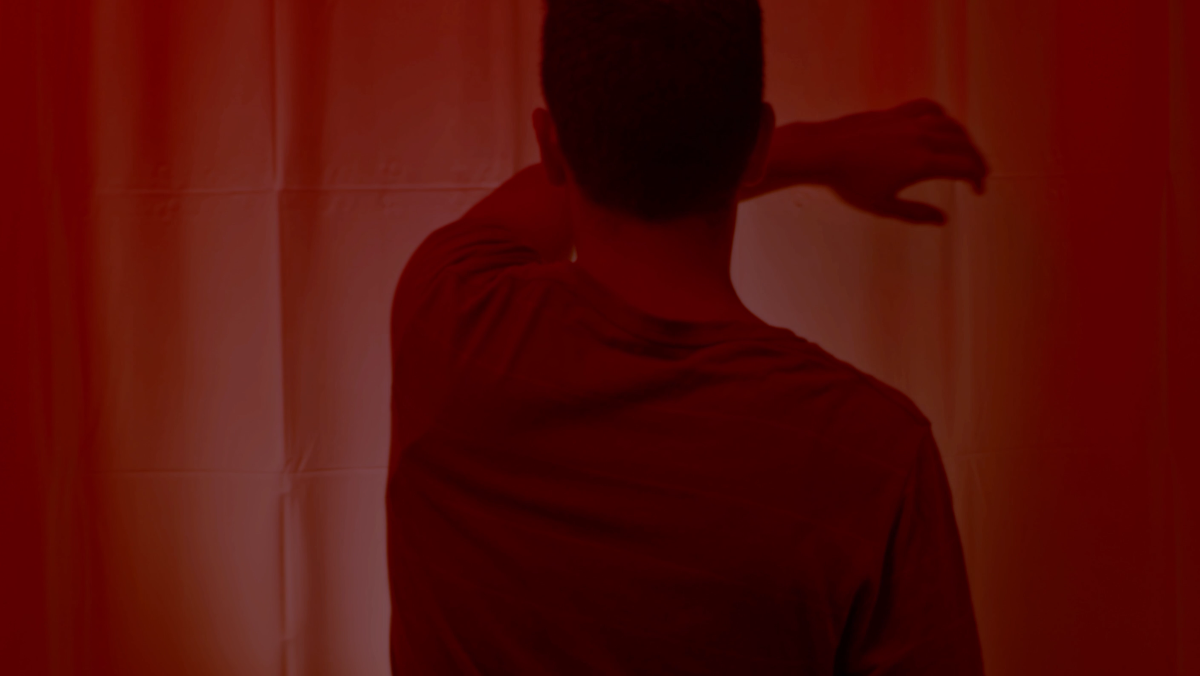
A Case Study
Narrative | Dramatic Features
Film Name: CLEAN CUT
Genre: Horror
Date: Shot July 2019, Finished Post: August 2020
Director: Dylan James Amick
Producer: Dylan James Amick, Daniel Fissmer
Writer: Dylan James Amick
Cinematographer: Jabari A.K. Holder
Production Company: WiseChild Films
Budget: $1200 approx.
Financing: Self-funded
Shooting Format: 2.4:1 Widescreen. Shot on a Blackmagic PCC6K
Screening Format: 2.4:1 Widescreen.
World Premiere: New York City Indie Theatre Film Festival – NYCITFF
Awards: N/A
Website: https://www.dylanjamick.com/cleancut
indieactivity: Tell us about “who you are”?
Dylan Amick (DA): I am Dylan James Amick, I am a writer & director living in Los Angeles. I love horror movies and that is why I made the film CLEAN CUT for NYCITFF2021.
Introduce your film?
Dylan Amick (DA): CLEAN CUT is a horror short about fear, insecurity, and facial hair. The story focuses on two roommates trying to decide if it is safe outside of their apartment yet, but it is really about the worst versions of ourselves. The monsters we are afraid of becoming. It is a tense and unnerving trip through insecurity that I hope the audience feels rather than just observes.
The Official Trailer for CLEAN CUT written, co-produced, and directed by Dylan Amick
Tell us why you chose to write, produce, direct, shoot, cut/edit the movie? Was it financial, chance, or no-budget reason?
Dylan Amick (DA): Since college, I’ve had a background in production, so when I started writing five years ago it was always with the goal of self-producing. I put a lot of energy into anything I work on. My full title on this project was writer-director-producer-editor because that’s what I am used to doing by budgetary necessity. My producer Daniel Fissmer was incredibly helpful in building a team and linking me up with artists who could elevate the work I had already done. He really encouraged me to branch out and expand the vision beyond just what I could do.
Introduce your crew?
Dylan Amick (DA): This film was only possible because my crew was so incredible. It starts with Jabari Holder, my DP, who was nothing less than incredible – so much of the visual style of this piece came from his hard work. We were very fortunate to have a nice camera, but Jabari also worked wonders with a very small toolkit of lights and the guiding design thought that every choice should make someone uncomfortable. Nate Betancourt and Matthew Schott (our actors) were incredibly patient over two very long shooting days, and in every take those dudes brought the thunder. After shooting, I showed the first minute (which was very different at that point) to my producer Daniel Fissmer and he saw a lot of potential in it. He and I went to school together at Virginia Tech and have worked together in the past, so he was ecstatic to join this project.
Daniel brought in Erik DeLong for the score and Matthew Schwartz to sound design and mix – both were incredible to work with. Matthew Schwartz’s sound design is the probably the scariest part of CLEAN CUT, I could not have been more thankful for all of his ideas and his artistry. Erik delivered this score on his first try! It’s mind-blowing how talented that guy is! Daniel Rivera was the colorist who gave our film the beautifully grotesque texture that I love about it – he was a video producer I met while freelancing at PBS WNET – he was full of ideas and happy to try anything, and boy did we make him try stuff when we were trying to find the look. From top to bottom, my crew made this movie happen – 5 out of 5 stars – hire them all!

What are your personal experiences putting on all these hats/responsibilities (simultaneously)? Tell us about story, writing, and production?
Dylan Amick (DA): My background is in production, I went to school for lighting design and work primarily as a lighting and projections tech in theatre. One of my first endeavors was a sci-fi/horror anthology podcast The Grayscale where myself and two other producers wore all the hats. Once I started creating my own projects, I was so familiar with the other side of the process that I couldn’t stay out of it. It’s what I think my biggest asset is as a writer – I am constantly thinking about production and design when I am still in the words stage.
What is the source of the idea? How did the story develop from the idea? And how did the story evolve into a screenplay? Why do this story? Do you have a writing process?
Dylan Amick (DA): My process always starts with necessity: I wanted to write a short that would show off my ability to direct horror and not break the bank. From my previous projects, I learned your two biggest expenses are always people and locations, so I needed the idea to work inside my apartment with a small team. What’s an easy dynamic to explore there? – Both parties want the other person to leave – now we have to figure out why, and suddenly it’s a real story! At the moment when I wrote it, I was in a downswing of confidence and saying a lot of negative things about myself, so that horror felt real to me. I had no idea that when it would be released over a full year later, the story of two roommates feeling trapped in the apartment would be a much more real horror story for so many of us.
Let’s talk pre-production: take us through a timeline of how you started and ended it?
DA: I wrote the script in a week, but then sat on it for several months while I was working on other projects. In the summer of 2019 (Several months after writing the idea) I had a gap between commitments and an idea for how to shoot this script on the cheap so I moved quickly to make it happen. From seeing that gap to our first day of shooting was less than a month, so much of this came together at the last minute. I lost two different actors in that process, we had a recordist drop out the night before the shoot – it was very fly-by-night because I took on so much. I was up all night before our first shoot getting the set prepped and wrapping my apartment in trash bags as part of the design.

What was your rehearsal process and period?
DA: We did not rehearse the project before filming. Jabari and I had met twice to go through in great detail our shot lists and ideas for how to cut the film together. I spoke with both actors about the part over the phone and it seemed like we were all on the same page. About half of the film is the two roommates playing Rock Paper Scissors, so we shot that first and played with the energy a whole bunch, but everything just clicked. I had worked with Nate and Matt a lot as actors previously, so we have a great shorthand. I knew we didn’t need to rehearse it because they could just walk into it.
You shot the film in days. How long were your days?
DA: We shot in two long days. Would have loved three, but it wasn’t possible. We shot half of the movie in the living room of my apartment in one day 14 hour day – not fun. The next day we shot the bathroom (which was in one of the actor’s apartments) scenes and that was in 9 hours I think? Everyone was well fed and compensated, but that still sucks.
Did the tight shooting schedule make it harder or easier? How did it affect performances?
DA: Since both actors had to shave, we had to do things in a very precise order because we couldn’t wait weeks for beards to regrow. Our schedule put a lot on my actor’s shoulders, but both of them rose to the occasion. But in the middle of the film when Nate looks exhausted and is begging to be let out, I have a rough idea where he was able to channel that energy from…
During the film production, what scene (that made the cut) was the hardest to shoot? And why?
DA: I don’t want to spoil too much because I never know if people read these before or after they watch the film (I mostly read the comment sections because I thrive in chaos) but the ending is always a hard shot. Our literal last shot is the second to last take at the end of that 14 hour day. A lot of stuff in the bathroom was composted, so keeping things in place with such a small crew was a challenge, but nothing that we couldn’t fix with an extra take.

What worked better in this latest production that mightn’t have worked so well in the last one you did?
DA: I am fortunate enough to walk away from everything I’ve worked on in the past few years with at least one lesson. The big lesson from CLEAN CUT was nothing happens as fast as you think it will. And that is OK.
What were the advantages and disadvantages of the way you worked?
DA: I think our big disadvantage was time; it made the short more stressful and it caused us to cut a few shots on both days. The small crew could be seen as a disadvantage because we all had to help so much, but I thought it made the entire crew hyper-focused. Every person in that room believed in the movie and knew what we wanted out of it, so they were happy to help.
What was the experience like of working with a small shooting crew?
DA: I love it! A small crew I think gives you the freedom to really play if you have an impulse, but also stop if you have a moment you want to talk through. Small crews need star players though, and Jabari went above and beyond with his setups. We also committed the cardinal sin of sloppy audio, so Matthew Schwartz came in clutch with his mix magic.
The film looks stunning. How did you get such a good look when shooting so fast?
DA: The design of our film is very busy, but I think our designing principle was simple enough to double down on chaos. Covering all the reflective surfaces was my initial design idea and that made the shoot easier for worries of shadows and those silly mistakes, but it was also a choice that we could build upon. I was a big fan of our trash bag aesthetic.
When did you form your production company – and what was the original motivation for its formation?
DA: I was already self-producing everything, so having an entity to put all of my work under seemed like the natural next step. WiseChild Films derived its name from JD Salinger’s Glass Family Stories. My goal with any work I create is to spark some kind of conversation after the credits, be it a debate or an exchange of interpretations.
What was the first project out of the gate?
DA: The Grayscale Podcast was the first project I wrote & directed for. The experience was incredible, it is really where I honed my taste and voice for horror. I have done several film projects since then including En Route, a comedic web series about app-based delivery boys to understand the community, which screened at NYCITFF2020.
What about independent filmmaking and the business do you still struggle with?
DA: Self-promotion is always a struggle, I am never the first thing I want to talk about, but I know I’m not alone in that. Making art and telling stories is a way of putting yourself out there already, so it feels like having to do that twice. I have always believed that work should speak for itself, but I am getting more comfortable with explaining why I am so excited about a project I have made.
Where do you think your strengths lie as a filmmaker?
DA: Any writer’s strength is their perspective. As a designer, I used to tell stories with only light, and now as a writer, I paint pictures with only words. If you’re an artist, I assume you think you have something interesting to say or show. I’m no exception to that.
Let’s talk about finance, how did you finance the film?
DA: I self-financed the project after saving up from my day jobs. The shooting budget was around $500, and we just barely went over that. I tried to cut the post cost down to less than that, but I realized I wanted it to be better than just finished. So I waited around 6 months while I worked and saved more money before I approached my post-production team.
How much did you go over budget? How did you manage it?
DA: The plan to outsource all of the post-production beyond the initial picture locking edit was not an originally budgeted expense. I needed money so I used the only material I did have – time. I would have loved to have finished the film before the pandemic, but I didn’t have the funds. I am incredibly happy with the team that decision landed me. Right place, right time. The big theme of where I am in my career is learning to be patient, but trying to always keep moving.
How important is marketing? Talk about the festival tour? Do you think a project can make a dent without it nowadays?
DA: I think any writer will tell you the story has to come first, but maybe that’s why more people have favorite directors than favorite writers? The truth is that you can’t have a story without an audience in mind – who is the film for? CLEAN CUT is at the beginning of our festival run and I am hoping it will connect with an audience of horror fans because that’s who I wrote it for.
Tell us about marketing activities or efforts on this project – and how it worked or didn’t work?
DA: We are mostly using Instagram and trying to connect with other filmmakers and artists.
What do you hope audiences will get from the presentation of your film?
DA: I hope the audience has fun! The best monster movies make us think, and there are themes about insecurity and negative self-imagery that I hope viewers pick up on, but I got into horror as a kid because it was exciting. I want my audience to lean and in, and I hope I make them jump when they do!
What else have you got in the works?
DA: Several scripts in contests right now, and I will be promoting CLEAN CUT the rest of this year as well. Another season of En Route is in the works and I am hoping to shoot my next horror film later this year – a body horror about people-pleasing.
Tell us what you think of the Case Study for CLEAN CUT What do you think? Let’s have your comments below and/or on Facebook or Instagram! Or join me on Twitter.
Follow Dylan Amick on Social Media
Website
IMDb
LinkedIn
Instagram
Vimeo
MORE STORIES FOR YOU









